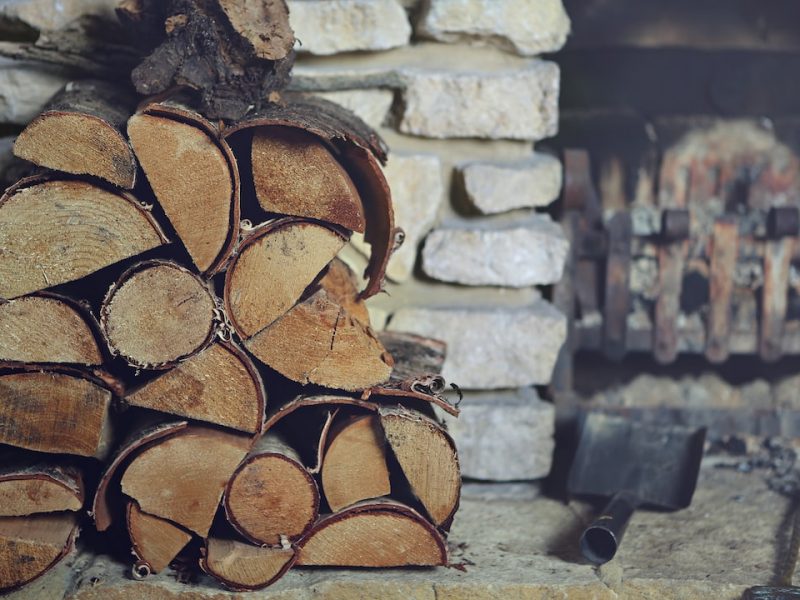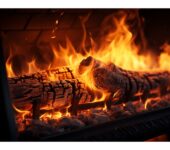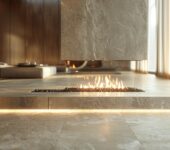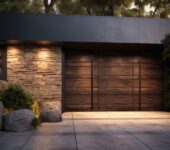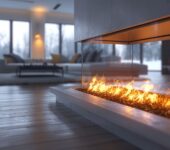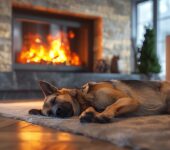Table of Contents
Many people believe that you can burn anything in a home fireplace. This isn’t true. Driftwood, painted or varnished wood, pressure-treated lumber, and more can all create harmful fumes.
Avoiding the wrong fireplace logs isn’t the only way to create the optimal home fireplace fire. Read on to learn how to arrange fireplace logs and more.
Types of Fireplace Logs to Use
Yes, all wood burns. But not all wood burns the same.
What species of tree did your wood come from? Depending on your choice, your wood could burn hotter or colder, slower or faster, and so on. Some wood can even produce a lot of tap or resin that clogs up your chimney quickly.
For the best fire, you need fireplace logs that have specific properties. They need to produce a lot of heat and not burn up too quickly. It’s also good if they burn up as much as possible.
You can learn more about the woods used for fire in the list below.
Hardwood
Hardwoods make the best fireplace logs. When you burn these, they burn hot and for a long time. They also have less sap and pitch than softwoods.
Remember, though, that hardwoods tend to be more expensive than softwoods. They also leave behind clinkers in the ash. These are pieces of hard and stony residue.
Examples of hardwoods include the following:
- Oak
- Maple
- Walnut
- Birch
Softwood
Softwood is best if you need or want to opt for cheaper firewood. However, softwood tends to burn faster. They can also cause more creosote to build up in your chimney.
Examples of softwoods include the following:
- Fir
- Pine
- Spruce
- Larch
- Cedar
Wood By Heat Produced
Not all hardwoods burn at the same temperature. Most burn hotter or colder than others. Experts group different firewood by the amount of heat energy they make per cord of wood.
Some woods that burn as hot as 200 to 250 gallons of fuel oil are in the following list:
- American Birch
- American Beech
- Apple
- White ash
- White oak
- Red oak
- Ironwood
- Hickory
The second category of firewood burns at 150 to 200 gallons of fuel per cord of firewood. Woods in this group include the following:
- Black Cherry
- American Elm
- White Birch
- Douglas fir
- Red Maple
- Silver Maple
- Tamarack
Finally, there’s the group that produces the lowest amount of heat. One cord of firewood in this group makes the same heat as 100 to 150 gallons. Species of wood that make this amount of heat are the following:
- White Pine
- Lodgepole Pine
- Red Cedar
- Red Alder
- Aspen
- Cottonwood
- Redwood
- Sitka Spruce
Wet and Fresh Firewood
You shouldn’t burn your firewood when you cut it from the tree. It will be too wet. You need to season them. That is, you need to let them dry out before you put them in the fire.
After you chop firewood, stack most of the wood bark side down. You should stack the top of your stack bark side up. This should help the logs dry out.
How to Arrange Fireplace Logs
After you gather the correct type of wood and prepare it correctly, you can build a fire in your fireplace. There’s a certain way that you need to do this.
Paper or Newspaper First
Get some newspaper or paper. Then crumple it up and put it under your grate. This will help start the fire.
Get Two Big Logs
Get two of your biggest fireplace logs. Place one bark down near the back of your grate. Place the other near the front of your grate.
Ensure the logs lie parallel to the back of your home fireplace.
Get Smaller Logs
Find some smaller logs. Put them on top of the bigger logs. Make sure they lie perpendicular to the back of your fireplace.
More Paper or Newspaper
Take some more paper or newspaper. Place it on top of the smaller logs.
Prime the Chimney
Take one of the pieces of paper or newspaper and light it. Then hold it up to the chimney. The smoke should start rising right away.
Light the Fire
Use the paper to light the other pieces underneath the fire if it’s safe. You can then drop the burning piece of paper onto the top of the logs. If using the paper as a lighter is unsafe, place it on top of the fireplace.
How to Arrange Gas Logs
Now, if you have a gas fireplace, you should only place decorative logs inside it. But the fireplace design ideas for these arrangements aren’t endless. Some of them can negatively affect how a gas fireplace functions.
You can arrange ceramic gas logs in the same way that you would set a regular fire. Big logs form the bottom, and smaller logs go on top of the big logs. The only thing that should be missing is the paper kindling.
Just make sure that none of the ceramic logs block the gas vents. If this happens, you won’t have a fire at all.
Plenty of Fireplace Ideas
So it doesn’t matter if you get the best home fireplace money can buy. You can still build a bad fire in it and not get the quality of fire you were expecting. You also need to put some effort into choosing and arranging your fireplace logs.
But if you need a good-quality fireplace for your home, we can help. Here at Dreifuss Fireplaces, we offer several styles and builds of fireplaces. We also provide safe installation as all our installers are NFI certified.
Check out our products on this page.
Latest Articles

Is It Normal For Sparks To Come Out Of Chimney?
Table of Contents1 What Are Sparks in a Chimney?2 What Are the Dangers of Sparks in a Chimney?3 How to Prevent Sparks from Coming Out
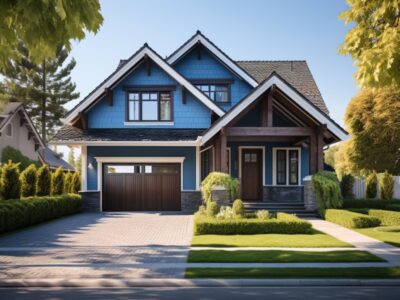
How Garage Doors Work
Table of Contents1 Types of Garage Doors2 Components of a Garage Door3 How a Garage Door Works4 Safety Features of Garage Doors5 Maintenance and Troubleshooting

What Kind Of Paint To Use On Metal Garage Doors
Table of Contents1 Why Paint Your Metal Garage Doors?2 Types of Paint for Metal Garage Doors3 Factors to Consider When Choosing Paint for Metal Garage



